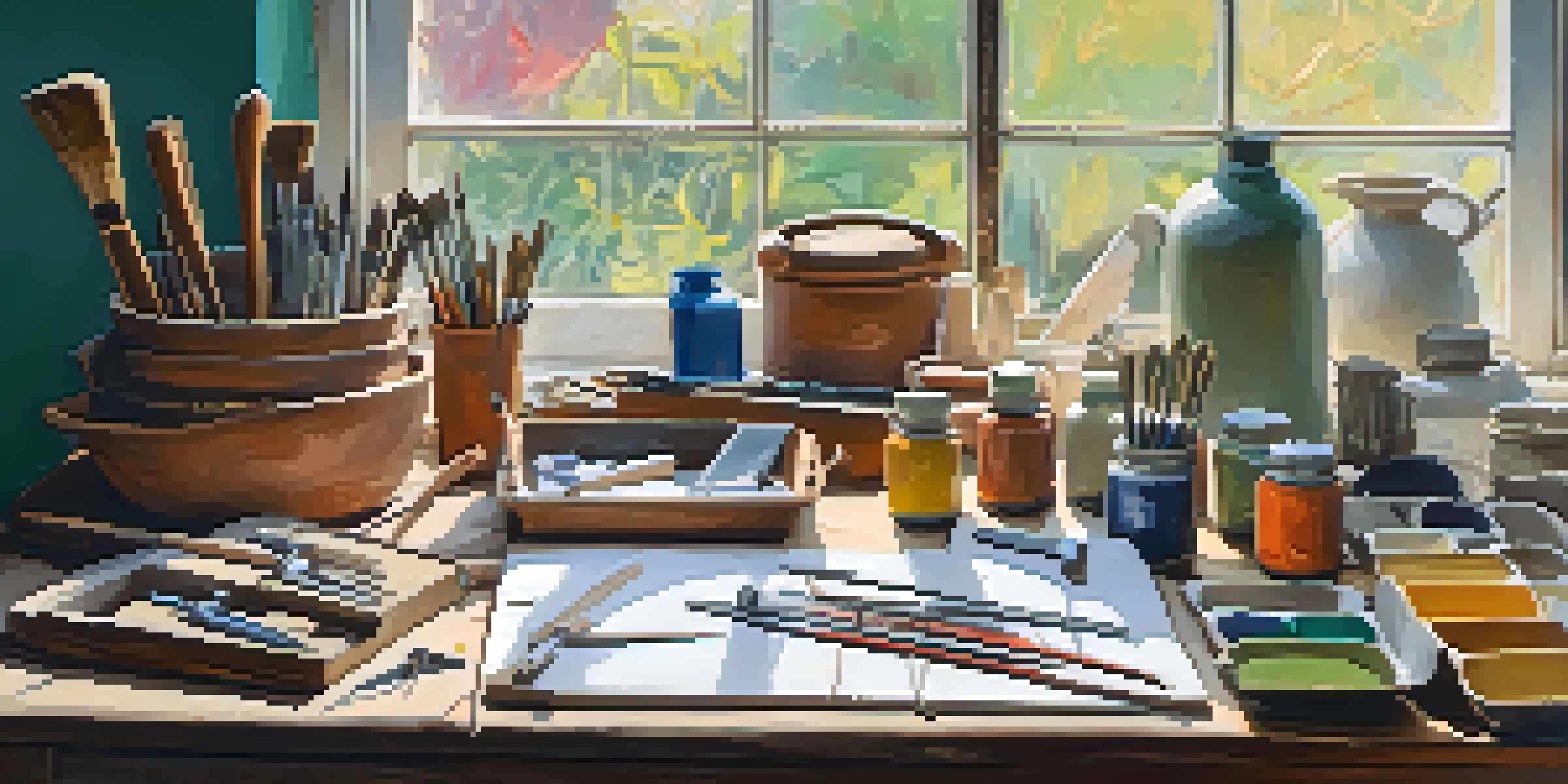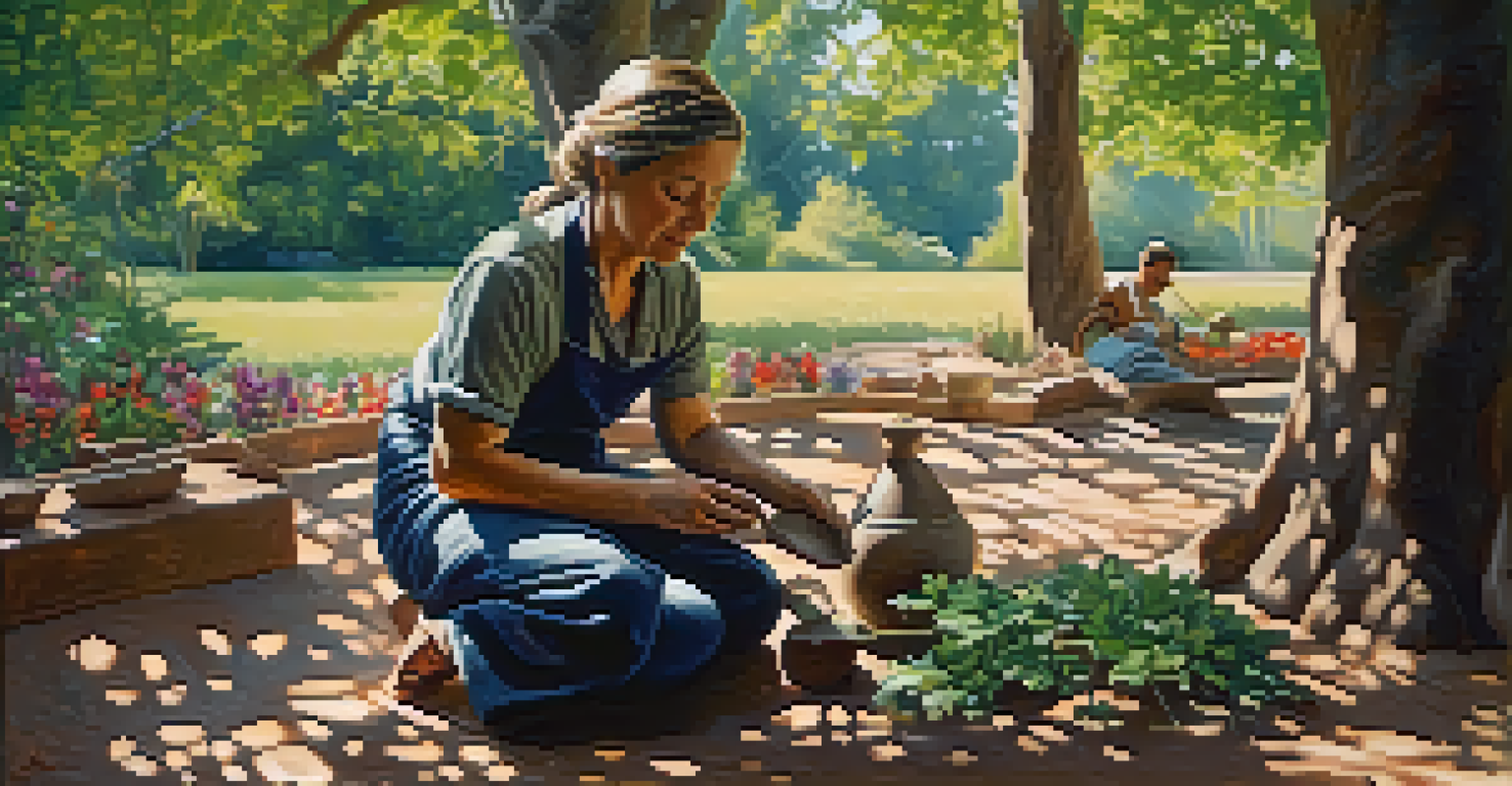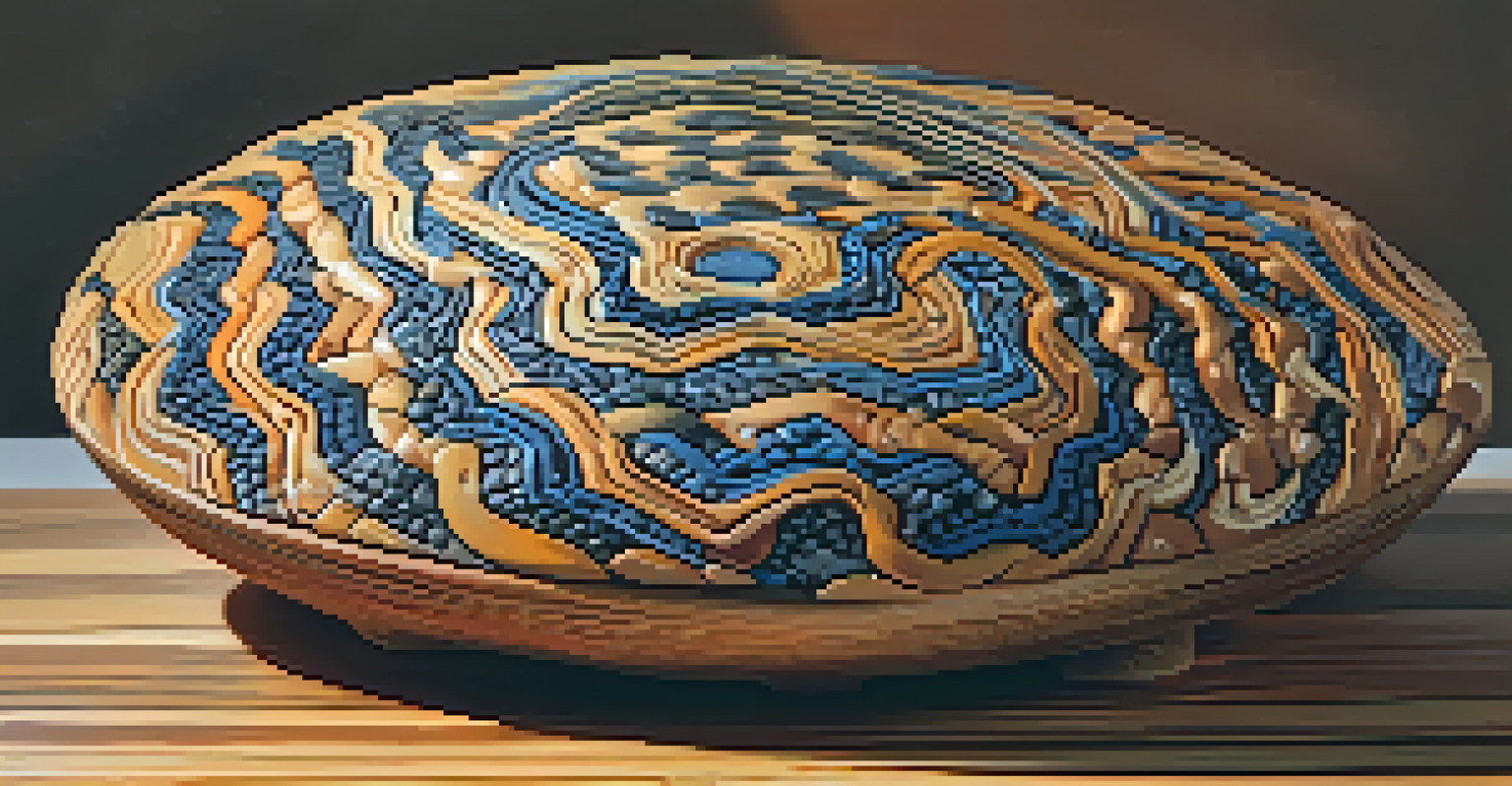Sculpting for Beginners: Starting Your Artistic Journey

Discovering the Joy of Sculpting: An Introduction
Sculpting is a fascinating art form that allows you to express your creativity in three dimensions. Unlike drawing or painting, where the canvas is flat, sculpting gives you the chance to create forms that can be viewed from all angles. This tactile experience can be extremely satisfying, as you shape and mold materials into something uniquely yours.
Every artist was first an amateur.
As a beginner, it's essential to approach sculpting with an open mind and a willingness to experiment. You may start with simple shapes and gradually work towards more complex forms as your skills develop. Remember, the journey is just as important as the end result, so don't be afraid to make mistakes along the way – they're often the best teachers.
In this article, we'll guide you through the initial steps of your sculpting journey, covering essential techniques, materials, and tips to help you get started. Whether you're looking to create decorative pieces or functional art, there's a place for you in the world of sculpture.
Essential Materials: What You Need to Get Started
Before diving into your first sculpting project, it's important to gather the right materials. Common sculpting mediums include clay, wax, and plaster, each offering unique properties and challenges. For beginners, air-dry clay is a great option, as it's easy to work with and doesn't require any special tools or ovens for curing.

In addition to your sculpting medium, you'll need some basic tools. A simple set of sculpting tools can include a wire cutter, a knife, a rib tool, and a few shaping tools for detailing. You can find these tools at art supply stores or even make your own from household items. Don't be intimidated by the array of options; start with what you can afford and gradually expand your toolkit as you grow.
Start with Essential Materials
Gather basic sculpting mediums like clay and essential tools to kickstart your sculpting journey.
Lastly, consider your workspace. A clean, well-lit area with a sturdy table will make your sculpting experience much more enjoyable. Make sure to keep your materials organized, and have some water and a sponge handy for smoothing out your clay.
Basic Techniques: Getting Hands-On with Sculpting
Now that you have your materials ready, it’s time to get your hands dirty! One of the first techniques you’ll want to practice is the pinch method, which involves using your fingers to shape and mold the clay. This technique is great for creating small forms and is incredibly intuitive, allowing you to feel the material as you work.
Art is not freedom from discipline, but disciplined freedom.
Another popular technique is coiling, where you roll out long, thin pieces of clay and stack them to create structures. This method is perfect for making vases or pots and helps in building height and volume in your sculptures. As you practice, you'll discover the rhythm of working with the material, and your confidence will grow.
Finally, don’t forget to experiment with texture and detail. Using tools or your fingers, you can create patterns or impressions on your surface. This adds depth and interest to your work, showcasing your personal style and creativity.
Finding Inspiration: Where to Look for Ideas
Inspiration is everywhere, and as a beginner sculptor, it's important to tap into your surroundings. Nature, architecture, and even everyday objects can spark ideas for your creations. Take a walk in the park, visit a museum, or browse online platforms like Pinterest or Instagram for sculptural inspiration.
Consider keeping an inspiration journal where you can jot down your thoughts, sketches, and photos of pieces that resonate with you. This practice not only helps in generating ideas but also trains your eye to recognize interesting forms and compositions in the world around you.
Embrace Common Challenges
Recognize that difficulties such as proportion and material consistency are part of the learning process.
Don’t hesitate to explore different themes, such as abstraction, realism, or fantasy. Allow your imagination to roam free, and remember that your unique perspective is what will make your sculptures stand out.
Common Challenges: Overcoming Obstacles in Sculpting
As with any creative pursuit, sculpting comes with its fair share of challenges. You might find that your initial pieces don’t turn out as expected, or you struggle with proportion and balance. This is completely normal – even seasoned artists face difficulties in their work.
One common challenge is working with the medium itself. Clay, for example, can dry out quickly, or become too soft to hold shape. Learning to control the consistency of your material will take practice. Pay attention to how your medium behaves and adjust your techniques accordingly.
Lastly, be patient with yourself. Sculpting is an art form that requires time and dedication. Celebrate your progress, no matter how small, and remember that every piece you create is a step forward on your artistic journey.
Finishing Touches: Tips for Completing Your Sculpture
Once you’ve shaped your sculpture to your satisfaction, it’s time to consider the finishing touches. Depending on your medium, you may want to sand, paint, or glaze your piece to enhance its appearance. For clay sculptures, using a simple acrylic paint can bring your creation to life and highlight its details.
Don’t forget about the importance of a good base or stand for your sculpture. A well-chosen base adds stability and can elevate the overall presentation of your work. Think about materials that complement your sculpture's style, whether it's wood, metal, or even a simple pedestal.
Connect with the Sculpting Community
Joining an art community can provide support, feedback, and inspiration as you develop your skills.
Lastly, consider how you want to display your finished piece. Whether it’s in your home, a local gallery, or online, showcasing your work is an important aspect of being an artist. Each display opportunity can lead to more inspiration and connections within the art community.
Joining a Community: The Importance of Connection
As you embark on your sculpting journey, consider joining a community of fellow artists. This could be a local art class, an online forum, or even social media groups dedicated to sculpture. Engaging with others will not only provide you with valuable feedback but also motivate you to continue improving your skills.
Sharing your work and experiences can lead to collaborative projects, exhibitions, and friendships that enrich your artistic life. Plus, being part of a community allows you to learn from others' techniques and perspectives, broadening your understanding of the art form.

Remember, every artist was once a beginner, and there's a wealth of knowledge to be gained from those who have walked the same path. Embrace the connections you make along the way, and let them fuel your passion for sculpting.